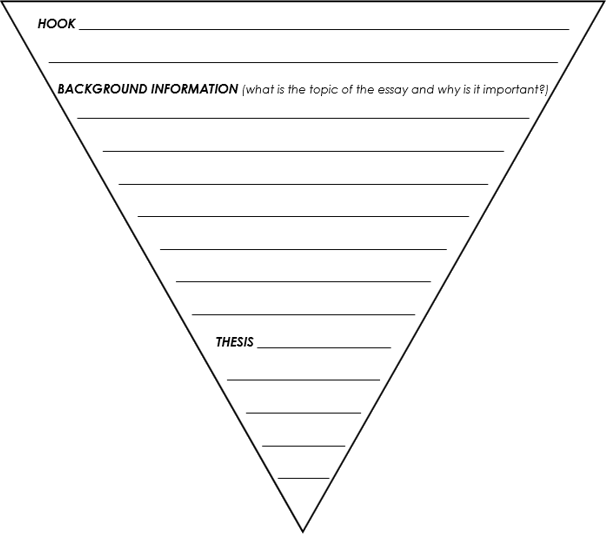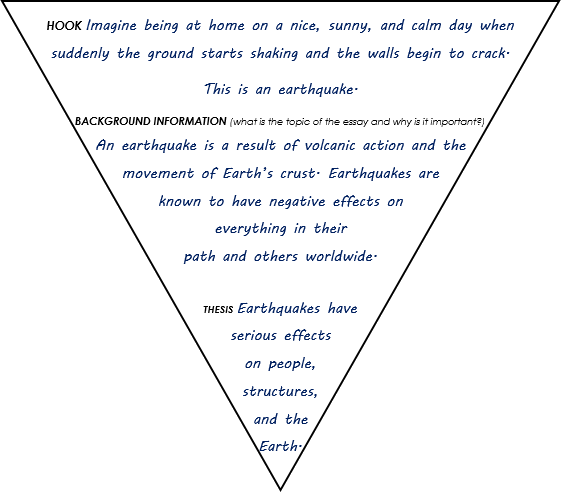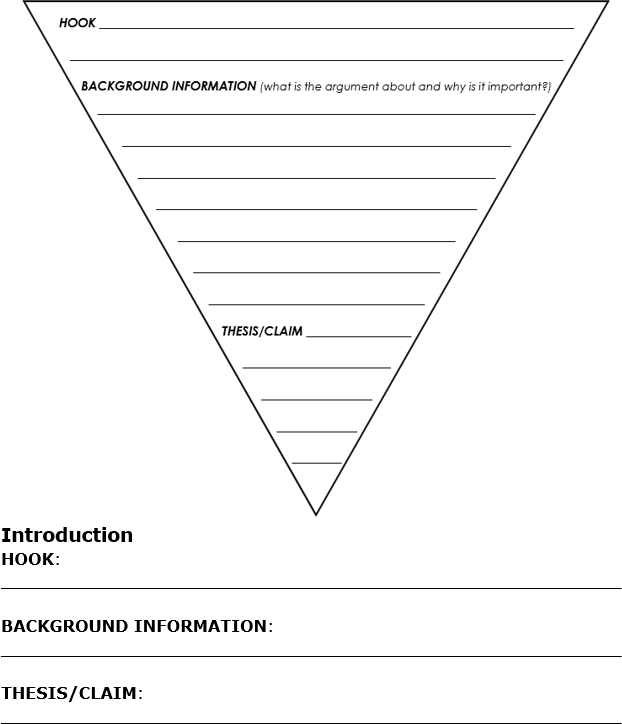
WRITING: INFORMATIVE/EXPOSITORY ESSAY INTRODUCTION
 |
Unit Overview
In this unit, you will learn how to develop the introductory paragraph for informative/expository essays on the AIR Assessment. At the end of the unit, you will review subject-verb agreement. Above you will find a list of key vocabulary for this unit.
*Download the attached pdf to take notes during the lesson. 
In this unit, you will develop the introduction for your informative/expository essay.
Over the next few units we will be constructing an informative/expository essay together based on the following prompt.
Construct a multi-paragraph response in which you explain how confusion and grit can lead to success. Use the information from the texts in your response.
Before we begin you will need to reread the following two passages:
PASSAGE 1
 The Value of Being Confused PDF |
PASSAGE 2
 Grit: The Power of Passion and Perseverance PDF |
Remember the outline the previous unit...
 |
We will be working towards building that outline little by little throughout the following units.
What is an Introduction?
The introduction to an informative essay is very similar to the introduction to an argumentative essay.
An introduction is the opening of an essay or speech, which typically identifies the topic, arouses interest, and prepares the audience for the development of the thesis. It can also be called an opening, a lead, or an introductory paragraph.
The introduction will contain the following three things:
Hook
A hook is a statement meant to grab the reader's attention.
Watch the following video on the different types of hooks:
Background Information
The background information is a summary of the topic. It describes the subject and explains why it is important. This is where you highlight the necessary information that someone who isn't familiar with the subject would need to know in order for your paper to make sense. Keep it brief.
Thesis
A thesis is a statement or theory that is put forward as a premise to be maintained. Your thesis will become the controlling idea of your entire essay.
You can think of your introduction like an upside down triangle. It starts out very general and becomes more and more specific.
 |
MODEL OF INTRODUCTION
Model Outline
HOOK: Imagine being at home on a nice, sunny, and calm day when suddenly the ground starts shaking and the walls begin to crack. This is an earthquake.
BACKGROUND INFORMATION/SUMMARY: An earthquake is a result of volcanic action and the movement of Earth’s crust. Earthquakes are known to have negative effects on everything in their path and others worldwide.
THESIS: Earthquakes have serious effects on people, structures, and the Earth.
 |
STOP! Complete Section A in the questions section.
 |
IT'S YOUR TURN
Now develop your own introduction outline!
(you already have your thesis from Unit 17)
Prompt: Construct a multi-paragraph response in which you explain how confusion and grit can lead to success. Use the information from the texts in your response.
 *You can print out this graphic organizer to help you. |
STOP! Complete Section B in the questions section.
Grammar Lesson 18: VERB PROBLEMS
Watch the following video about using correct subject-verb agreement:
Let's Practice!
|
2. Choose the correct verb for the following sentence:
|
3. Choose the correct verb for the following sentence:
|
STOP! Complete Section C in the questions section.
 |
| Subject-verb agreement |